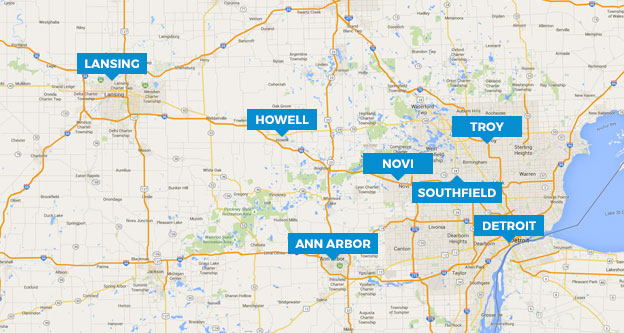IRS and State Tax Liens
A tax lien is the federal or state government's legal claim to your property. The IRS may issue a tax lien if you fail to pay your taxes. The IRS will mail you a Notice of Federal Tax Lien when a lien is issued.
Tax Lien Filing Location
The IRS will file a tax lien in the county of your last known residence. For example, if you reported a residence located in Brighton, Michigan on your tax return, the IRS tax lien will be filed in Livingston County. You can contact the Register of Deeds for your county to obtain copies of all tax liens filed.
Removing IRS Tax Liens
There are 10 main options to remove IRS tax liens:
1) You can fully pay all taxes owed.
2) You can enter into a tax settlement (Offer in Compromise) with the IRS
3) You can set up a direct debit installment agreement for income tax balances less than $25,000 (Fresh Start Program)
4) The IRS will generally issue a lien release if the taxes are more than 10 years old.
5) If the lien was incorrectly filed, a request can be made to remove the lien.
6) The IRS might agree to remove a lien if it will help you pay off your back taxes faster. For example, if you wish to take out a bank loan to pay off your taxes, but cannot qualify for a loan due to a tax lien, the IRS may remove the lien.
7) The IRS may also remove the lien if it is in the best interest of the taxpayer and the government. For example, if you apply for a job and are told you will not be hired due to tax liens, but would be hired if not for the tax liens, the IRS may remove the liens so that your financial situation will improve and you will be better able to pay back the taxes you owe.
8) If you would like to sell property in order to pay back your taxes, but are unable to sell due to a lien, the IRS or state may remove the lien with the understanding that all proceeds from the sale will be applied to back taxes.
9) You may be able to remove a lien attached to a property that has no monetary value.
10) The IRS may also release a lien on a property if your equity in the property is at least double the amount of the lien. For example, if you own a property worth $100,000 with no loans owed on the asset, and the IRS files a tax lien for $25,000, they may remove the lien. If you have a $55,000 loan on the same property, the IRS would not remove the lien because you would have only $45,000 of equity, which is less than double the amount of the lien.
The Effect of Federal or State Tax Liens on Your Credit Rating
The IRS does not report back tax balances to the credit bureaus. The credit bureaus find out about IRS tax liens by collecting information from the County Register of Deeds.
Both federal and state tax liens are public information. At any time, you can go to your County Register of Deeds and request to view all tax liens filed in the last month for all taxpayers. There are companies that will do this on a continuous basis. An employee of the company will go to the County Register of Deeds and enter into the company system all recently filed federal and state tax liens. The credit bureaus will then request tax lien information from the companies.
How to Remove IRS or State Tax Liens from Credit Reports
Step 1 – Request an IRS lien withdrawal. A tax lien 'withdrawal' will remove the public Notice of Federal Tax Lien.
Step 2 – Contact each credit bureau to request that the tax balances be removed from your credit report.
Step 3 – Check you credit report to ensure the tax balances were removed.

Free eBook Download
The Comprehensive Guide On Tax Liens
Learn the effect of tax liens and how to remove and withdraw an IRS Tax Lien.
